Invented by William Hudson Welch, Paul M. Greco, Rony Abovitz, Yonatan Munk, Samuel A. Miller, Magic Leap Inc
Virtual reality (VR) refers to a computer-generated simulation that immerses users in a virtual environment. By wearing a VR headset, users can feel as if they are physically present in a different world. This technology has gained significant traction in the gaming industry, with VR games offering a more immersive and realistic experience for players. Additionally, VR has also found applications in training simulations for various professions, such as pilots, surgeons, and military personnel.
On the other hand, augmented reality (AR) overlays digital information onto the real world, enhancing the user’s perception and interaction with their surroundings. AR technology has gained widespread attention with the release of popular mobile applications like Pokemon Go, which allowed users to catch virtual creatures in real-world locations. AR has also been adopted in industries like architecture and interior design, where it enables users to visualize and interact with virtual models of buildings or furniture in real-time.
The market for virtual and augmented reality systems and methods is projected to experience substantial growth in the coming years. According to a report by Grand View Research, the global VR market size is expected to reach USD 62.1 billion by 2027, growing at a compound annual growth rate (CAGR) of 21.6% from 2020 to 2027. Similarly, the AR market is estimated to reach USD 340.16 billion by 2028, with a CAGR of 43.8% during the forecast period.
One of the main drivers of this market growth is the increasing affordability and accessibility of VR and AR devices. In recent years, the prices of VR headsets have significantly decreased, making them more accessible to a broader consumer base. Additionally, the advancements in smartphone technology have made it possible for AR experiences to be accessed through mobile devices, eliminating the need for specialized hardware.
Another factor contributing to the growth of the virtual and augmented reality market is the continuous innovation and development of new applications. Companies are constantly exploring new ways to utilize VR and AR technologies to enhance user experiences and improve efficiency in various industries. For example, in healthcare, VR is being used for pain management, mental health therapy, and even surgical training. In education, AR is being employed to create interactive and engaging learning experiences for students.
Furthermore, the COVID-19 pandemic has accelerated the adoption of virtual and augmented reality systems. With social distancing measures in place, businesses and individuals have turned to these technologies to connect and engage remotely. VR and AR have enabled virtual meetings, conferences, and events, providing an immersive and interactive alternative to traditional video conferencing platforms.
However, despite the promising growth prospects, the virtual and augmented reality market still faces some challenges. One of the main barriers is the need for more compelling and high-quality content. While the technology has advanced significantly, the availability of engaging VR and AR experiences is still limited. Content creators and developers need to continue pushing the boundaries of what is possible in order to attract and retain users.
Additionally, concerns around privacy and security also pose challenges to the widespread adoption of virtual and augmented reality systems. As these technologies collect and process vast amounts of user data, ensuring the protection of personal information becomes crucial. Stricter regulations and industry standards will need to be established to address these concerns and build trust among users.
In conclusion, the market for virtual and augmented reality systems and methods is poised for significant growth in the coming years. With advancements in technology, increasing affordability, and a growing demand for immersive experiences, VR and AR are transforming various industries and reshaping the way we interact with the digital world. As the market continues to evolve, addressing challenges around content creation and privacy will be crucial for the sustained success of these technologies.
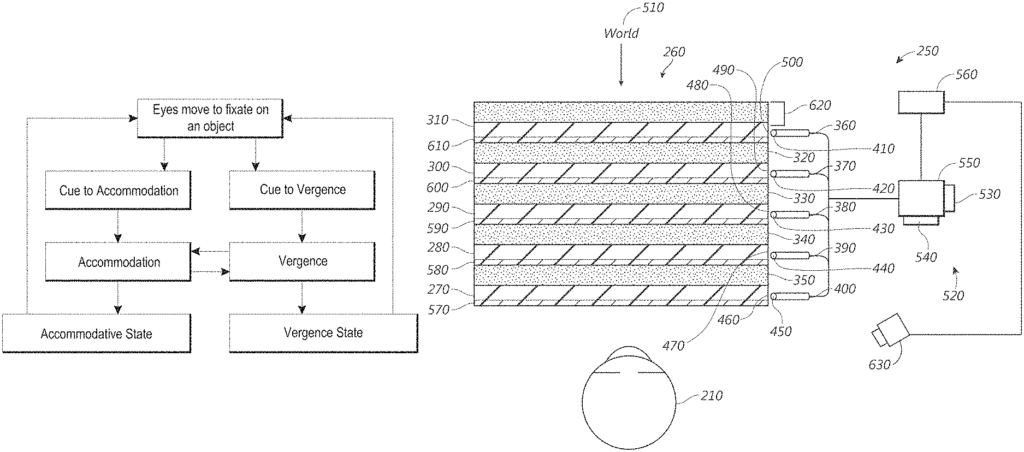
The Magic Leap Inc invention works as follows
Methods are disclosed that present virtual objects in a limited number depth planes, using, for example, an augmented-reality display system. The farthest depth plane is within the mismatch tolerance of an optical infinity. The display system can switch the depth plan on which the content is active displayed so that it is displayed on the plane where the user is fixating. It is possible to reduce the impact of fixation tracking errors by using depth planes that partially overlap. The display system determines the fixation depth of a user and then decides whether or not to adjust the depth plane selected for a virtual object. This determination can be made based on the fixation depth and whether it falls within an overlap region between adjacent depth planes. The display system can change the depth plane active depending on whether or not the fixation depth is outside the overlap area.
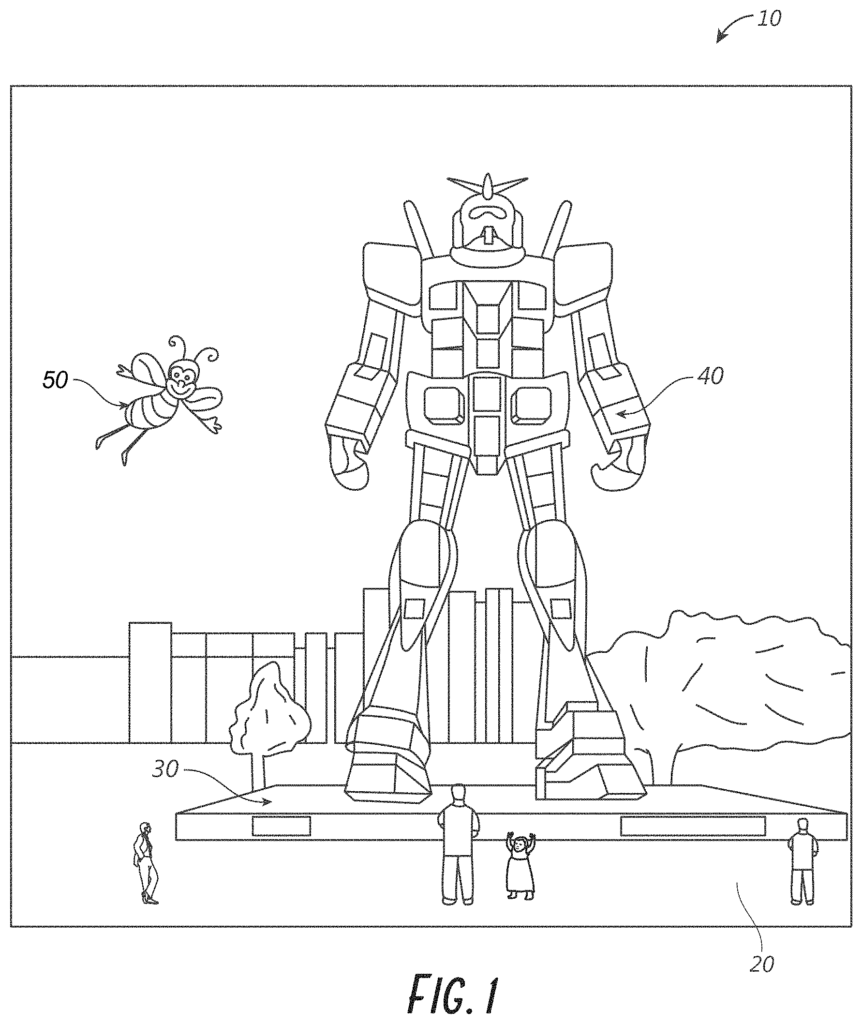
Background for Virtual and Augmented Reality Systems and Methods
Field
The present disclosure relates primarily to display systems including augmented reality imaging systems and visualization systems.
Description of Related Art
Modern computing technology and display technologies have made it possible to develop systems for virtual reality. “Virtual reality” or “augmented reality?” Experiences in which digitally reproduced images, or portions thereof, are presented to users in a way that makes them appear real or can be perceived as such. A virtual reality (or?VR?) scenario usually presents digital or virtual information without transparency to any other real-world visual input. An augmented reality (or?AR?) scenario typically presents digital or virtual information as an enhancement to the visualization of the actual world. Mixed reality (or?MR?) is a type AR scenario that typically includes virtual objects that are integrated into and responsive to the natural world. An example of AR image content in a mixed reality scenario is AR content that appears to block or be perceived as interfacing with objects in real life.
Referring to FIG. “Referring to FIG. 1, an augmented reality scene 10, is shown. AR technology allows the user to see a park-like setting 20 with people, trees, buildings, and concrete platform 30. User also perceives that they?see? ?virtual content? There is a robot statue 40 that stands on the real-world platform 30 and an avatar character 50 that looks like a cartoon, which appears to be a personification for a bumblebee. These elements 50 and 40 are virtual? They are virtual in that they don’t exist in the real world. It is difficult to create AR technology that allows for a natural-feeling, rich presentation among other real-world or virtual imagery elements.
Systems and Methods disclosed herein address different challenges related to AR/VR technology.
In some embodiments, the display system includes a head-mountable screen with a hyperfocal range. The head-mountable displays comprises one or multiple waveguides, each with an optical power and depth plane. The waveguides project light onto a viewer in order to display the image content on depth planes. Each depth plane is less than optical infinite.
In some embodiments, the display system includes a head-mountable screen. The head-mountable displays comprises one or multiple waveguides, each with an optical power and depth plane. The waveguides project light onto a viewer in order to display the image content on depth planes. The farthest depth plane is about 0.33 dpt from optical infinity.
In other embodiments a display system includes a head-mountable screen. The head-mountable displays comprises a stack formed by a plurality waveguides. Each waveguide is associated with a depth plane and optical power. The waveguides are designed to project light onto the depth planes to display the image content. The optical infinity mismatch tolerance is the distance between two depth planes. The mismatch tolerance ranges from 0.5 to 1.0 dpt.
In some embodiments, there is a method of displaying image content in a head-mounted screen. The method comprises determining whether an accommodation-vergence mismatch for the image content exceeds a threshold; and modifying the image content if the combination-vergence mismatch exceeds the threshold.
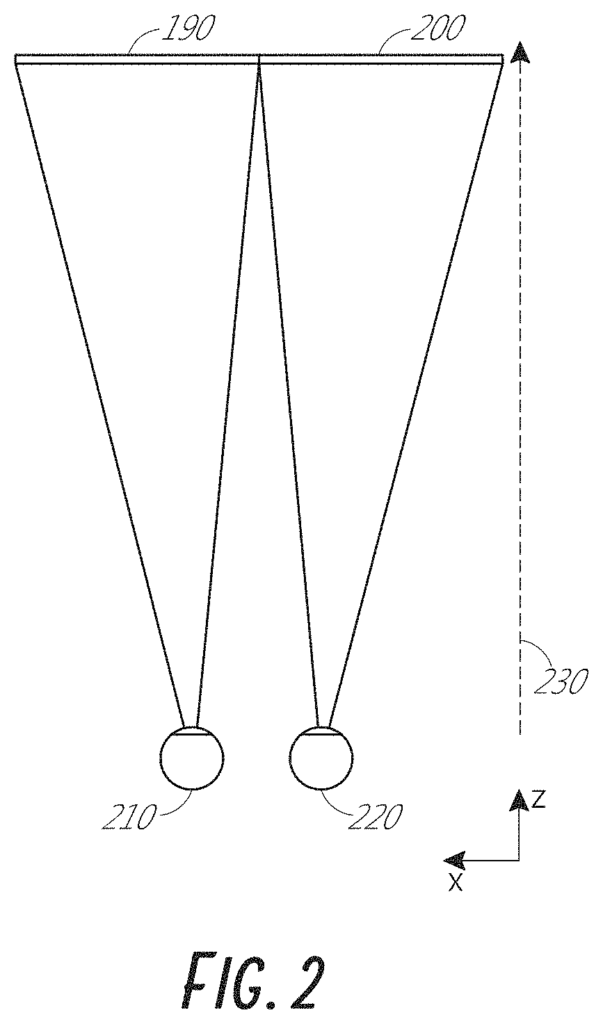
In other embodiments, the method of displaying image content is a head-mounted device worn by the user. The method includes determining whether the user has eye strain and then modifying the content of the image if it is found to be present.
In some embodiments, the wearable head-mounted system includes a frame that is designed to be worn by an individual. The frame is fitted with a display. The display system includes a support structure that extends from one side to the other of a user’s head. The frame is mechanically attached to the support structure.
In some embodiments, the display system consists of a display device and one or more processors. It may also include computer storage media. Display system operations include determining fixation depth. Fixation depth is the depth at which the eyes of the user fixate. These operations include determining if a depth plane is selected at which the virtual object will be presented to the user based on the fixation depth. The virtual object will be presented at a specific depth plane based on the determinations made when deciding whether to adjust a selected plane.
In some embodiments, the display system consists of a display device and one or more processors. It may also include computer storage media. Display system operations include determining fixation depth. Fixation depth is the depth at which the eyes of the user fixate. The depth plane at which the virtual object will be displayed to the user from the plurality is determined based on fixation depths and the ranges of depth planes that each depth plane encompasses. The virtual object is presented at that particular depth plane.
In some embodiments, the method includes determining the fixation level, which is the depth at the user’s eyes are fixed. The fixation depth determines whether to adjust the depth plane selection at which the virtual object is presented to the user. The virtual object will be presented at a selected depth plane based on whether or not to adjust the selection of that depth plane.
In some embodiments a display system includes a display device and one or more processors. It may also include computer storage media. Display system operations include determining the fixation point for a user, which indicates a three-dimensional position on which he or she is fixating. These operations include determining if a depth plan at which a virtual image is to be displayed is switched, the decision being based at least partly on the depth of the fixation point. The depth plane where the virtual object will be displayed is changed, wherein the switching of the depth plane is triggered a user perception-limiting event.
Below are additional examples of embodiments.
Example 1
A display system consisting of:
Example 2
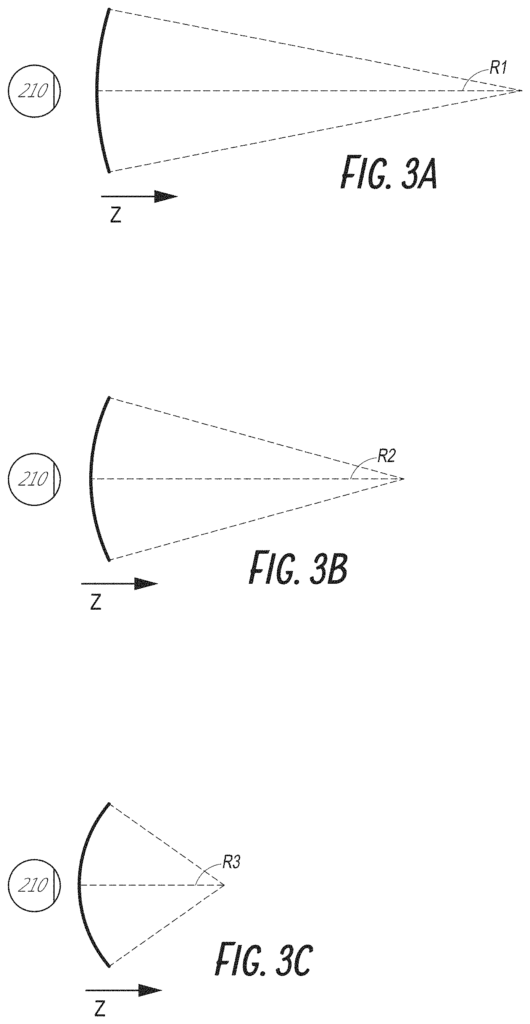
The display system of Claim 1 where the farthest depth plane is within approximately 0.50 dpt optical infinity.
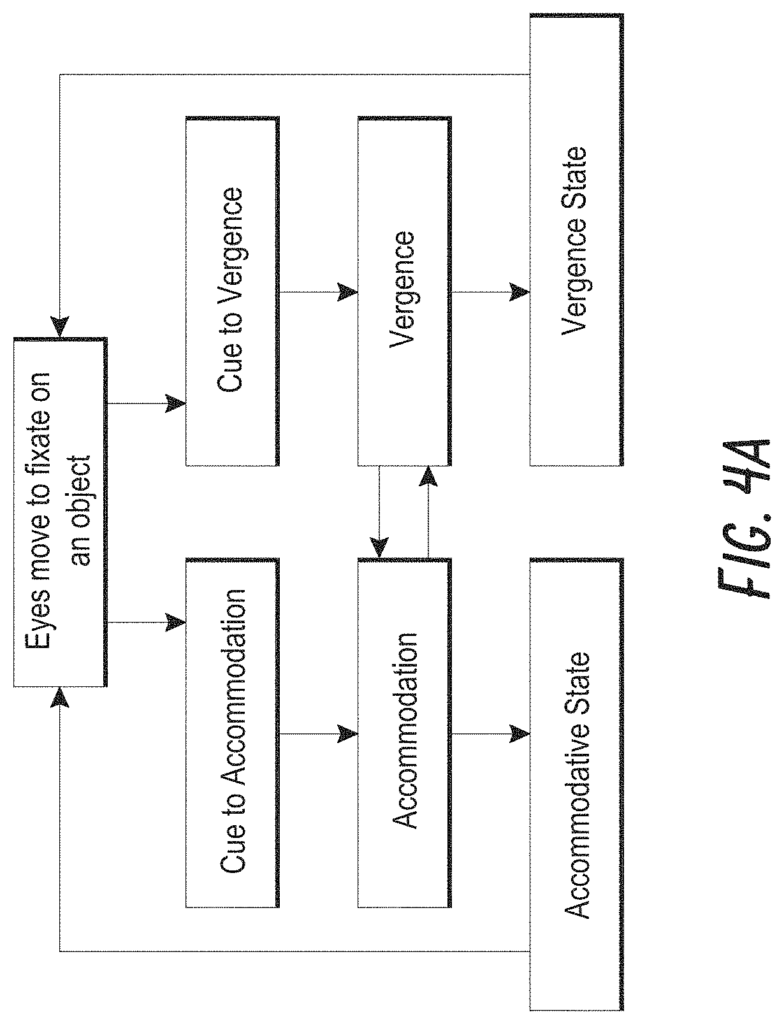
Click here to view the patent on Google Patents.
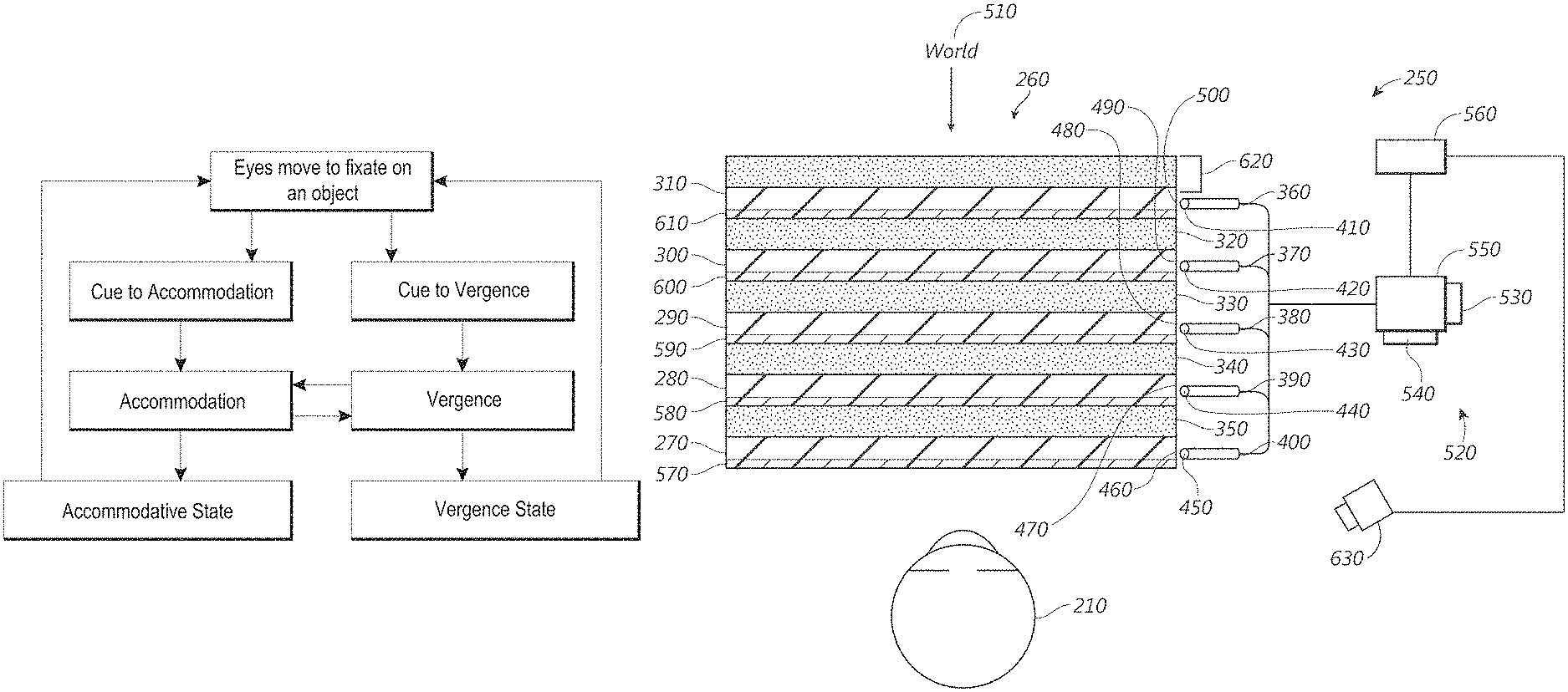
Leave a Reply